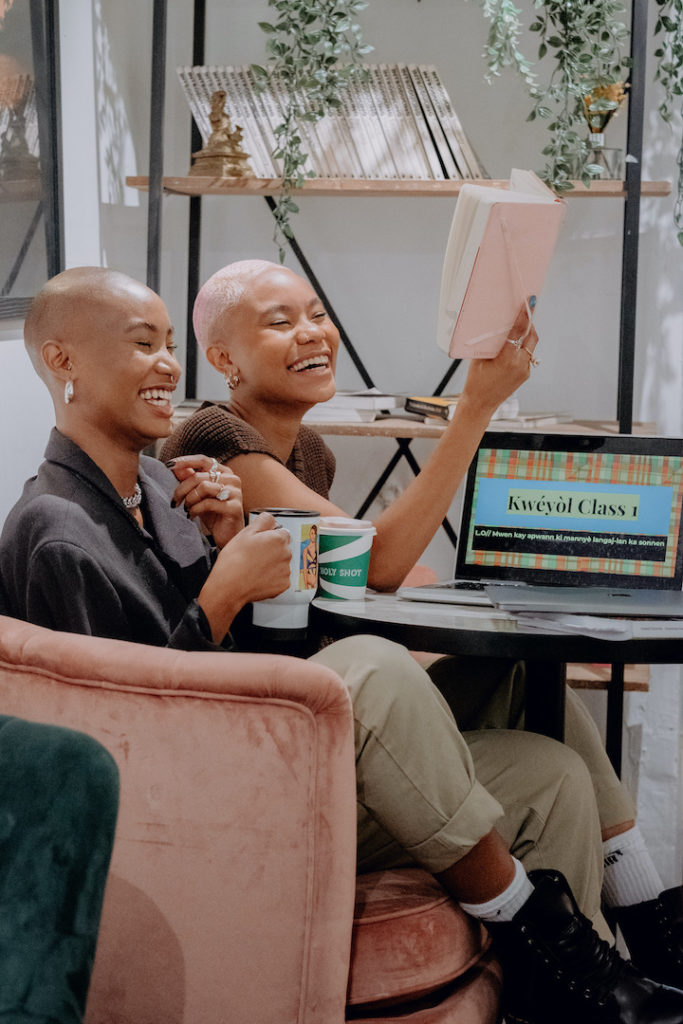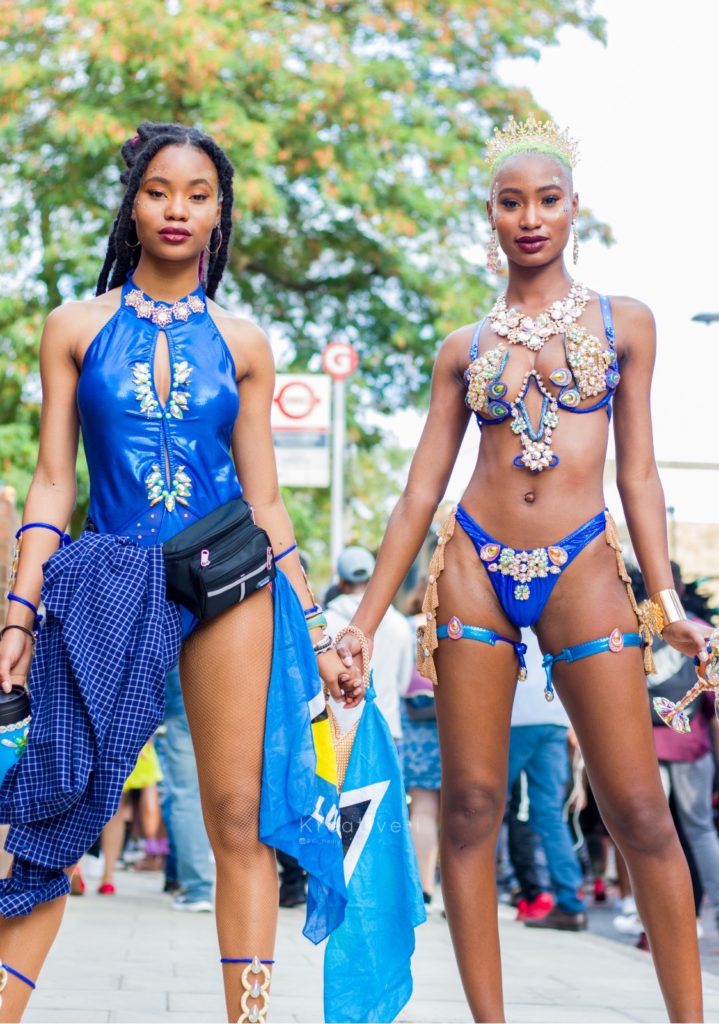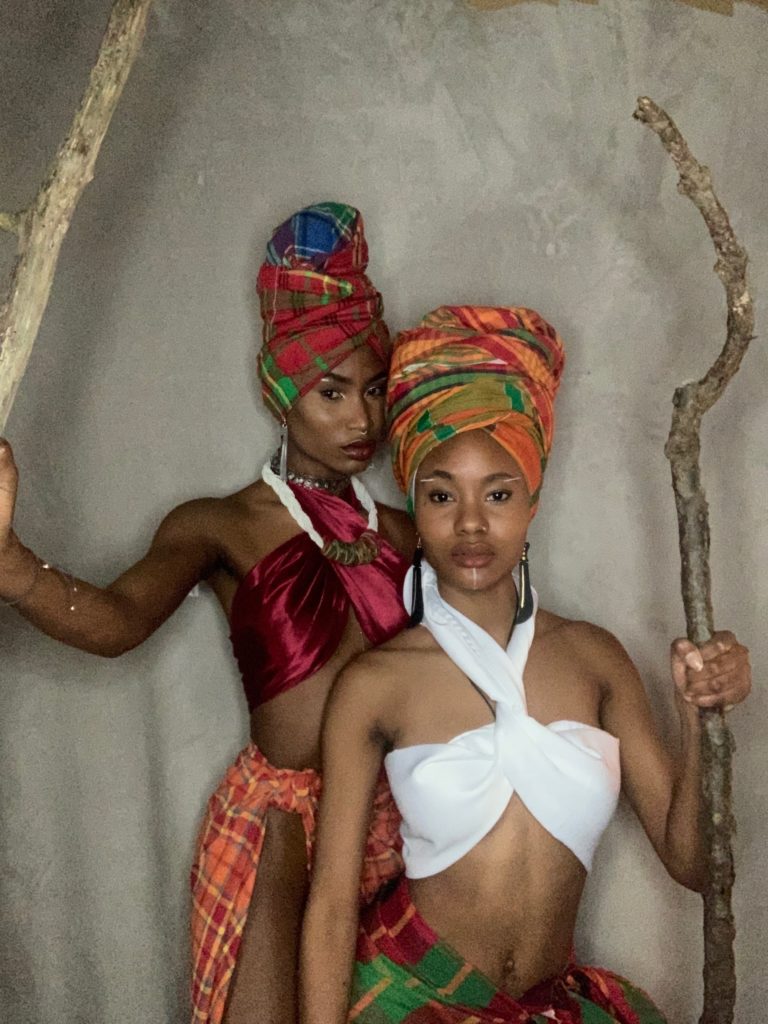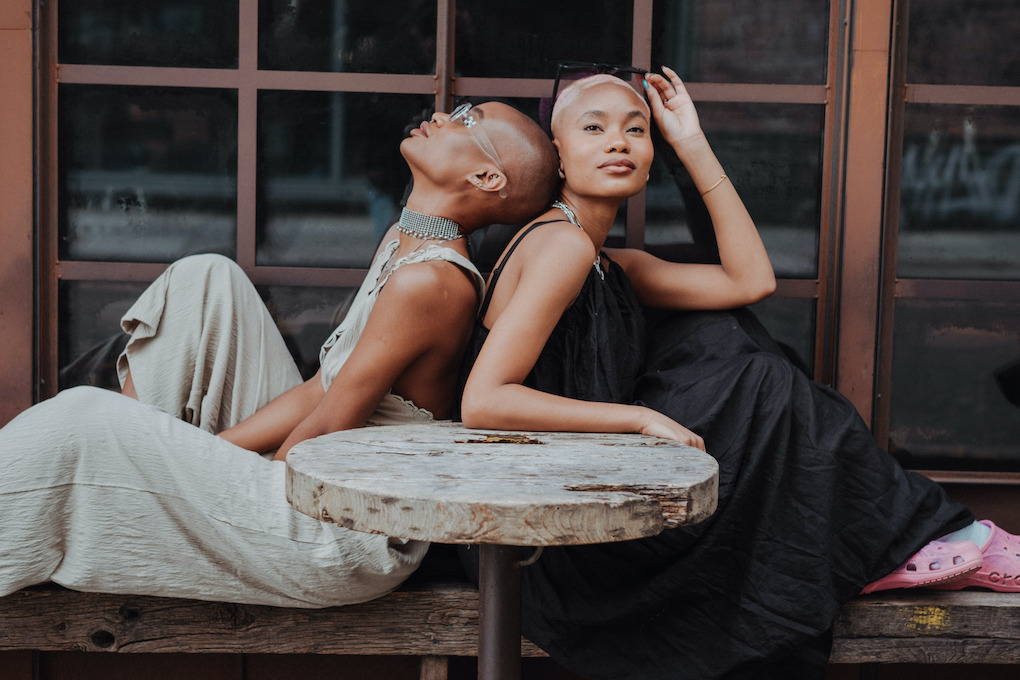St Lucian born sister-duo Kimhia and Indira are changing the game for the way that St Lucian Kwéyòl is taught and made accessible. Their platform, Twossaints, aims to preserve Creole and Caribbean history as a whole. Having recently returned to their home island, they reflect on the importance of making their language accessible and visible in St Lucia and beyond, as well as their reflections on community building through Twossaints.
Travel Noire: What is Twossaints and how did it come into existence?
Kimhia: Twossaints originally started, as I like to call it, as a love service, but my sister doesn’t like this so much. Really we wanted to showcase our relationship and our different creative endeavors, and then we naturally started to delve more deeply into another part of our identity— Creole.
Indira: We currently offer one-to-one Kwéyòl classes. We also have a bi-weekly newsletter that includes news, opportunities, there’s a Creole section, there’s always a guest contributor and of course an editor’s note written by one of us. We’ve recently started to offer our workshops with external companies. We also collaborate with brands that we genuinely love, and we’re excited to be currently working on an online course to further the accessibility of learning Creole. There will also be our very own Twossaints podcast coming soon.

Travel Noire: How exciting to hear about all the growth to come! Taking it back to the beginning, how would you each describe your relationship with Creole?
Indira: Creole is so pervasive in my everyday life. It shows up when I speak English in that my sentence structures are usually based in Creole, or while learning Spanish I often found myself diverting to Creole to make sense of things. So I think even if I’m not speaking Creole every single day of my life – which I more or less am – it is still so ingrained into my mental processes. Creole is truly an everyday lived experience for me.
Kimhia: It’s very similar for me – a lot of my thoughts are actually in Creole, and then sometimes they jump to English. Creole is a part of my everyday experience and being back here in St Lucia, I’m witnessing how much more it’s coming to the forefront. I’m learning new vocabulary, I’m around people who are speaking Creole daily, and it’s not a thing I have to search for anymore. It’s no longer just in my household – I can go anywhere and hear Creole. For instance, our grandmother only speaks to us in Creole, and so it’s just such a comforting part of my everyday experience that I couldn’t see myself without it.

Travel Noire: It is so encouraging to see how prevalent Creole is in your lives as first generation St Lucians living your London lives but also now being based in St Lucia. How, if at all, did your relationship with Creole along with your sense of culture or selfhood change when you first moved to London?
Indira: I moved to London quite young, I was five and as my brother likes to say a “ti kaka wat” (little rat shit). When I was in London, it was just my mom and I for the first year, and we didn’t speak in Creole as often as we used to, so I found myself forgetting the language. My mom was really sad about that, so she implemented a rule where we would speak nothing other than Creole in the house. After this, the language came back to me and I slowly reverted to English depending on the context of what we were speaking about. I’m even more grateful for my tie to my culture, and sometimes I think, OK, what if my mom didn’t implement that Creole-only rule? I probably wouldn’t have so much culture within me. There are so many things in Kwéyòl that can’t be necessarily be expressed or understood in English. It feels good to be a part of that. It kind of feels like you’re in like a secret club. When I try and translate from Creole to English to my friends it never has the same impact.
Kimhia: I think for me, it was more so moving to London and having to drop my St Lucian accent that took the most adjustment. I made two St Lucian friends when I arrived in London who wanted to learn a few words every now and again. It was just a thing of practicing our language even if they didn’t fluently speak Creole, they always wanted me to teach them a few things. To this day, whenever we meet we call each other ‘salop’ (nasty), which is a bit of a bad St Lucian word. It was also important for me to recognize that my friends and I were different types of St Lucians being born and raised in different places, and accept that even if we were not the same, we had St Lucia in common.

Travel Noire: Do you feel that Creole is protected or well preserved in St Lucia?
Kimhia: I feel like there are certain communities that are definitely very heavy on preserving that Creole culture, especially on the West Coast.
Indira: A lot more can be done on a governmental platform. I’m thinking about something as simple as signage in the airports, road signs or whatever it may be. I feel like these simple changes could be a way of maintaining and protecting our language.
Kimhia: Thankfully there are small things that people are trying to do like the Food Research Centre that has been implementing or conversations in Creole and story times in Creole. I think the government should be more in support of schemes like that. Ultimately, it’s our ancestors’ language for protection, so we need to protect it.
Travel Noire: Do you see Twossaints interacting with the tourism industry in St Lucia?
Both: Absolutely.
Indira: It’s really important that, as an island, we start to incorporate Creole into the tourism industry. We’re thinking tourists boards and resorts, hotels – wherever. We envision Creole classes and culture being an integral experience for tourists visiting the island. When you learn the language, you become more connected to a place. In St Lucia 55% of our GDP is based on tourism, so let’s maintain that and even increase that by teaching people about St Lucia through our language.
Kimhia: Right, it would be so easy to attract tourists through our beautiful beaches but let’s give them more because we have so much more.
Travel Noire: What has been the most surprising thing about being on the journey as sisters turned businesswomen of Twossaints?
Indira: It would have to be the support that we’ve been getting. It always surprises me how much people really love our content, take the time to engage and leave comments under our posts, sign up to our newsletter and are generally super supportive. In the space of a year we’ve got almost 3500 followers.

Travel Noire: Your growth has been so amazing to watch. Talk to us about your own personal growth with your return to the island this year?
Kimhia: For me, I always feel like St Lucia is calling me. If I’m away for too long, I get miserable, and I literally need to come back just to regroup, to have some peace. In that sense, I’ve been planning this trip for so long that being here right now feels a bit surreal. Sometimes I’m like, wait, I’m actually home. I’m spending time with family and my childhood people, people who have known me and are now getting to know adult Kimhia.
Indira: As someone who travels a lot, being back home has really altered my understanding of what it means to be rooted and grounded. I think my expectation of feeling super at home here in St Lucia was maybe naive. Being home has been an adjustment period, it’s a completely different pace of life, different climate. I’ve been able to relearn my environment as well as myself, which has been beautiful. Honestly, it feels like I’m exhaling. I didn’t even realize I’d been inhaling for so long that now the exhales feel so refreshing.
Follow the Twossaints journey on Instagram, start your Kwéyòl classes and delve deeper into Caribbean history with the Twossaints newsletter.





